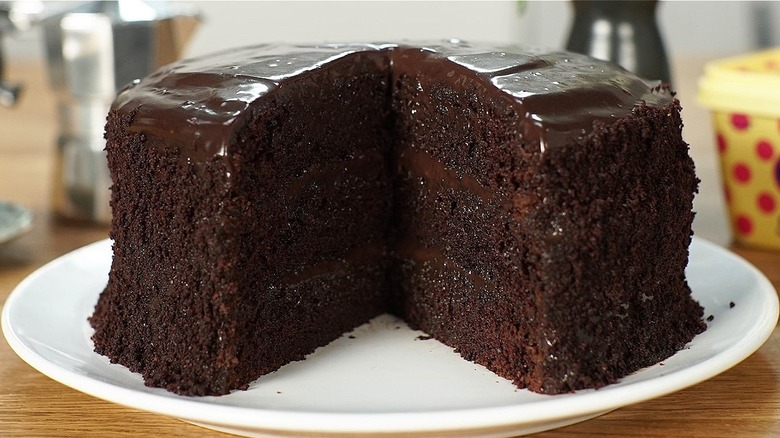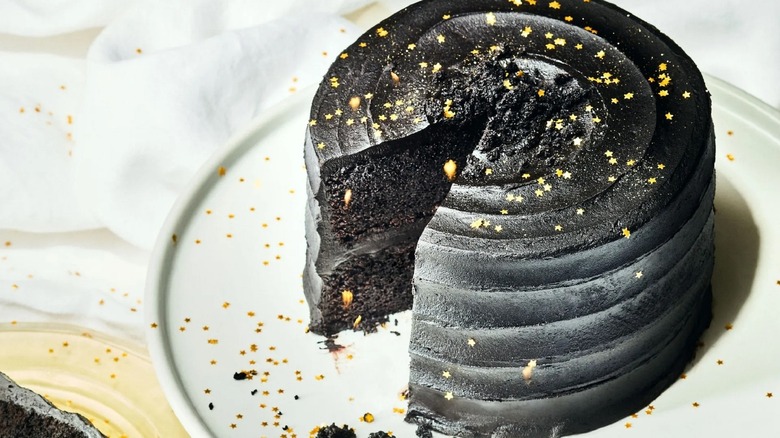Brooklyn's Iconic Chocolate Blackout Cake Got Its Name From WWII Drills
Perseverance was an essential attitude to exhibit during the hardships of World War II, especially when Americans had to start living with the reality of rationing. The sales of all sorts of items were limited by rationing, explains The National WWII Museum, including tires and gasoline. Food was also significantly affected. Meat, coffee, fat, and cheese were among the restricted items. Sugar was the first to be rationed in 1942 (and the last to be made freely available in 1947 – two years after the end of the war).
Dedicating ingredients to make delicious sweet treats must have presented a challenge as a result, but when your business was famed for producing a famous chocolate cake, there was surely no alternative but to give it your best shot. That was the case for New York's Ebinger's Bakery, which was renowned for its Brooklyn blackout cake – a multi-layered dark chocolate cake containing chocolate pudding, frosting, and decorative crumbs, notes Atlas Obscura.
The recipe remained under wraps, but it seems safe to assume that sugar was an important part of the equation. However, keeping people in the dark about how to make it wasn't how the dessert got its moniker. So how exactly did the Brooklyn blackout cake earn its distinctive name?
Wartime dangers inspired the Brooklyn blackout cake's name
Even though the precise date the Brooklyn blackout cake was first made is a mystery, Atlas Obscura reports that its original name is derived from World War II precautionary measures that switched off lights across New York. These were called blackout drills, creating a darkened environment very similar to the deep chocolate complexion of the cake.
These tests (which switched off advertising hoardings, ordered the covering of windows in high-rise buildings, and even extinguished the Statue of Liberty's flame) started in 1942 because of concerns that New York's bright atmosphere could illuminate ships passing nearby, making them the targets of submarine attacks or aerial bombardments, explains The New York Times. Nighttime baseball games were banned, and cars even had hooded headlights. However, despite the fears, New York did not suffer any attacks.
Brooklyn's blackout cake was a stalwart of Ebinger's and was especially revered on special occasions. The bakery grew over time to more than 50 stores, details Atlas Obscura, but in 1972 went bust due to a combination of supermarket competition, healthy eating awareness, and a bank balance that couldn't keep up with the number of store openings. The demise of Ebinger's also signaled the end of its dark dessert: the chocolate cake's secret recipe was never made public.

